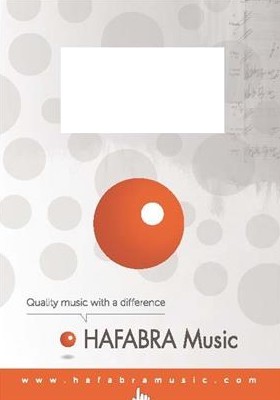
Infos :
This piece was composed in 1901–2, revised several times thereafter, and dedicated to “dear Almscherl” (a loving reference to Mahler’s wife Alma)
“Heavens, what is the public to make of this chaos in which new worlds are for ever being engendered, only to crumble into ruin in the next moment? What are they to say to this primeval music, this foaming, roaring, raging sea of sound, to these dancing stars, to these breathtaking, iridescent, and flashing breakers?” – letter from Gustav Mahler to his wife Alma, after his first rehearsal of the Fifth Symphony
Gustav Mahler was never satisfied with his Fifth Symphony. Over the last nine years of his life, he revised it continually; in one of his last letters, Mahler wrote, “The Fifth is finished. I have been forced to re-orchestrate it completely. I cannot understand how I could have written so much like a beginner ... Clearly the routine I had acquired in the first four symphonies completely deserted me, as though a totally new message demanded a new technique.” These revisions, and Mahler’s comments, reveal Mahler’s lifelong nagging self-doubt. Although Mahler lived most of his life in the 19th century, his music, with its myriad complexities and psychological layers, reflects 20th century sensibilities. The Fifth Symphony, in particular, with its conflict, brutality, joy, and upheaval, speaks to the fundamental uncertainties of our time.
Mahler clearly understood that his Fifth Symphony charted new musical realms, not only for himself, but also for music in general. He knew it would take listeners time to catch up to his musical innovations; in that same letter to Alma, while he was rehearsing the orchestra in Cologne for the premiere, Mahler wrote, “Oh that I might give my symphony its first performance fifty years after my death!”
Unlike Mahler’s first four symphonies, (known as the Wunderhorn Symphonies because they were based on several songs Mahler composed using texts from a group of poems titled Des Knaben Wunderhorn), Mahler insisted that the Fifth Symphony was “pure” music, with no accompanying program or extra-musical idea. He said, “The music is composed without any outer influence. It is in my mind. I seek nothing ... and I do not want to be told that there might have been something different. ‘It’ is constantly moving inside my mind. ‘It’ and nothing else is to take shape.”
Clearly, Mahler wanted people to hear the Fifth Symphony as music first and foremost, but it is also a symphonic rendering of his own psyche. Mahler scholar Donald Mitchell understood this when he wrote that the Fifth Symphony “initiates a new concept of an interior drama,” in which the program “has gone underground, rather, or inside.”
The Fifth Symphony has five movements, structured into three large sections. The first section features a funeral march, followed by the second movement, whose tempo Mahler indicated as “Stormily. With greatest vehemence.” A trumpet fanfare precedes the funeral march, which is punctuated by wildly beautiful expressions of grief.
The second movement begins with the same despairing mood of the first, and the funeral march returns as well. After a rehearsal with the Berlin Philharmonic, conductor Wilhelm Furtwängler said of this movement, “I do not know any other music that could bring me into a more pessimistic mood. It devalues everything that could still look valuable to us in this dreary world.”
The central Scherzo comprises the second section. At 819 measures and just under 19 minutes, it is the longest of the five movements and a monumental achievement in its own right, a magnificent blend of melodies, including several waltzes and ländler (Austrian country dances). According to Mahler’s close friend, violist Natalie Bauer-Lechner, Mahler conceived the scherzo as a representation of “a human being in the full light of day, in the prime of his life.” Its dynamic energy features brilliant passages for solo horn.
The Adagietto is arguably Mahler’s best-known composition, particularly for American audiences. Although it is often associated with death (Leonard Bernstein conducted it at a memorial for President Kennedy), according to conductor Willem Mengelberg, Mahler actually composed it as a musical love letter to Alma during their brief courtship. Mengelberg wrote, “This Adagietto was Mahler’s declaration of love to Alma! Instead of a letter he sent her this in manuscript: no accompanying words. She understood and wrote to him: he should come!!! Both told me this!” The intimacy of the Adagietto, scored for strings and harp, foreshadows the essence of Mahler and Alma’s tempestuous marriage, which was full of tenderness, passion, and irreconcilable conflict.
Hard upon the heels of the Adagietto, the Rondo-Finale explodes with unrestrained joy. The opening horn and wind solos recall Mahler’s first symphony, and sweep away all the doubt, fear and grief of the preceding movements in a triumphant celebration. The theme from the Adagietto returns, transformed into an exuberant shout.
| HAFABRA Music | Nº 899 |
| Composer | MAHLER Gustav |
| Arranger | SCHYNS José |
| Style | |
| For | • Wind Band |
| Duration | 75:00 |
| Level | pro |
| Price code | 81 |
 Contact
Contact Basket
Basket My favorites
My favorites My account
My account







